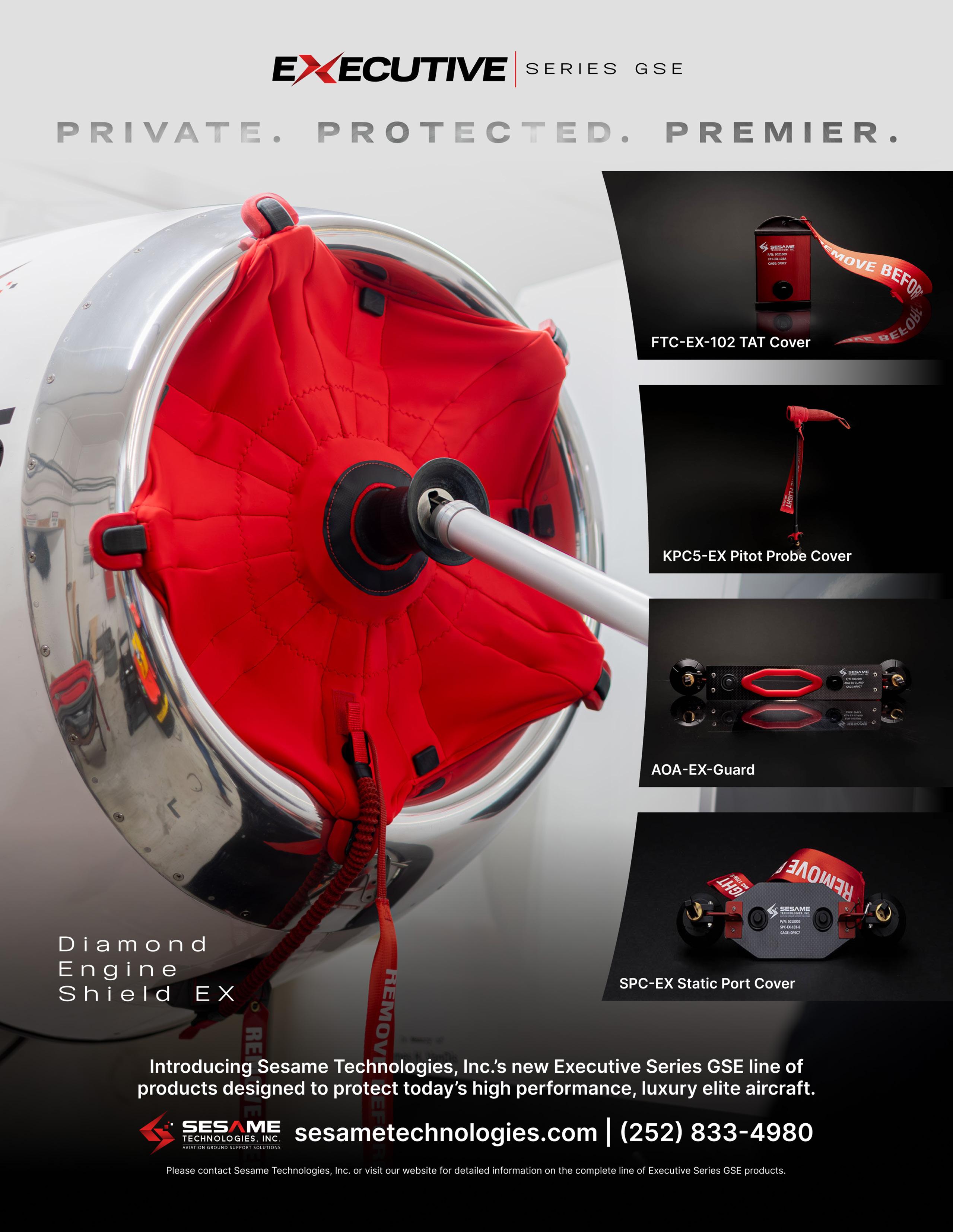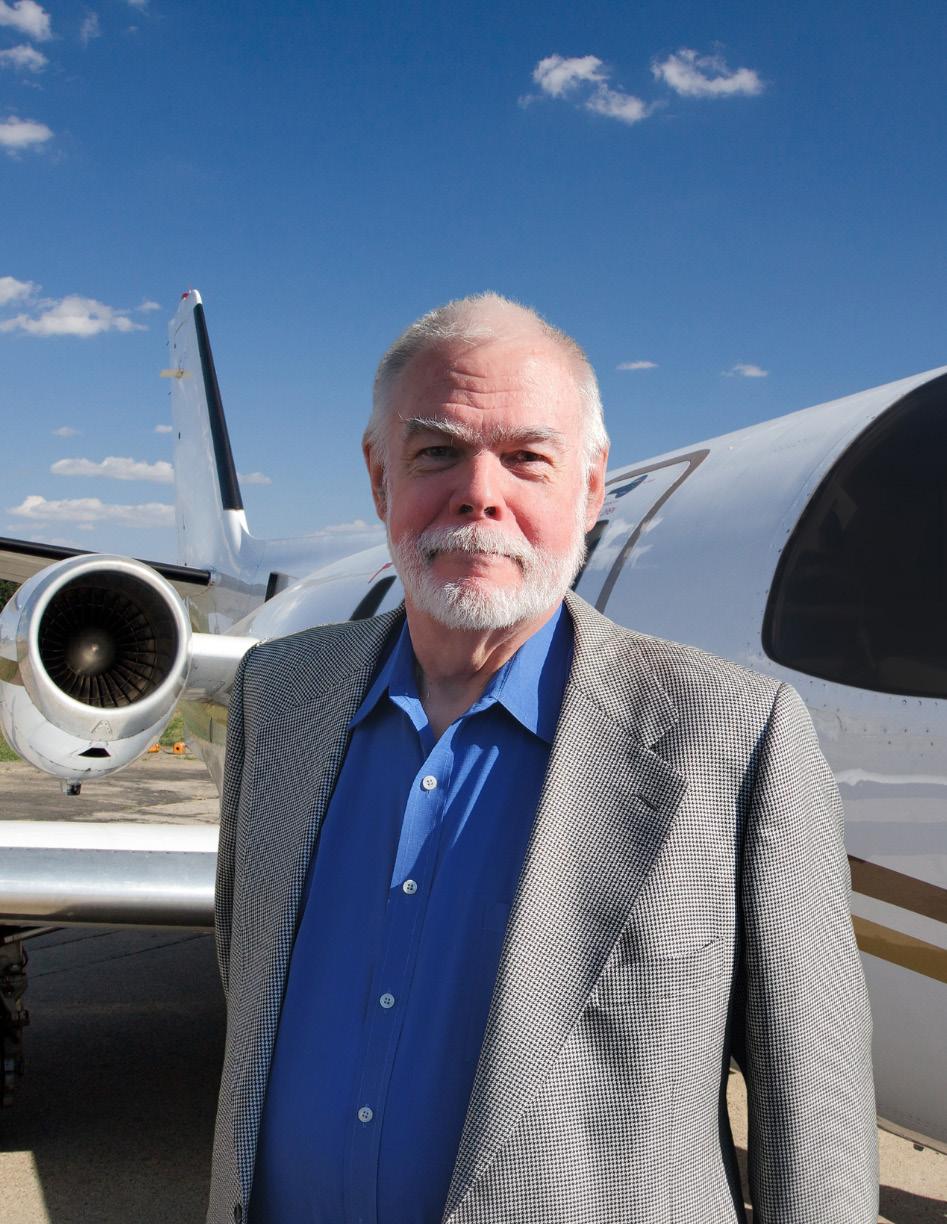
















Dear Readers,
Welcome to the Spring/Summer 2025 issue of BizAvJets USA Magazine. We are honored to bring you another dynamic edition filled with inspiring stories, exclusive interviews, cutting-edge innovation, and a strong focus on the people and businesses shaping the future of business aviation.
In this issue, we’re excited to spotlight a diverse array of aviation professionals and visionaries:
• We begin with Dr. Iain Kelly, whose unique career as both an optometrist and pilot offers valuable insight into the vital connection between vision and aviation safety. His story blends medical expertise with a lifelong love of flight.
• Our exclusive feature on Tom Alston of Aero & Marine Tax Professionals sheds light on the often-confusing realm of California aircraft use tax exemptions. Tom’s personal journey and unmatched track record make his firm a critical asset for anyone purchasing aircraft in California.
• We then take a lighter yet no less impactful flight path with comedian Tom Foss, whose career has ranged from cruise ships to aircraft carriers, bringing laughter to both civilians and military personnel. His dedication to performing for the troops and giving back through organizations like WhyHunger showcases the heartfelt power of humor.
• Finally, we were privileged to sit down with Karen Moore, Founder of Suite Life Privé, whose story is a testament to resilience, elegance, and innovation. From bespoke luxury events to global concierge services, Karen is elevating the standard of hospitality in Las Vegas and beyond.
As always, we extend our deepest thanks to our advertisers, whose support makes this publication possible. Your partnership enables us to continue sharing stories that inspire, educate, and connect our vibrant business aviation community. We also thank you, our readers, for taking this journey with us. Whether you’re a pilot, owner, executive, or enthusiast, we are here to serve as your trusted resource and companion in the skies and on the ground.
Stay safe, fly often, and enjoy the read.
The BizAvJets USA Magazine Team
P.O. Box 5402, San Mateo, CA 94402 (650) 358-9908, Fax (650) 358-9254

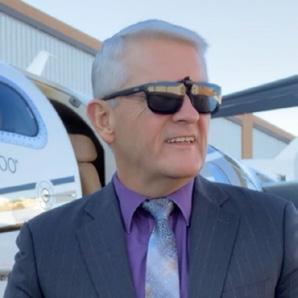
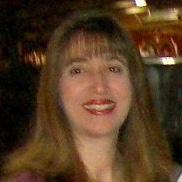
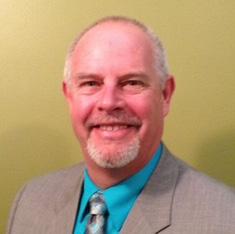
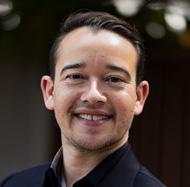
Business matters, advertising and editorial concerns should be addressed to In Flight USA, P.O. Box 5402, San Mateo, Calif. 94402 or by calling (650) 358-9908–fax (650) 358-9254. Copyright © 2008-2021 In Flight Publishing.
BizAvJets USA is not responsible for any action taken by any person as a result of reading any part of any issue. The pieces are written for information, entertainment and suggestion – not recommendation. The pursuit of flight or any action reflected by this paper is the responsibility of the individual and not of this paper, its staff or contributors. Opinions expressed are those of the individual author, and not necessarily those of BizAvJets USA
All editorial and advertising matter in this edition is copyrighted. Reproduction in any way is strictly prohibited without written permission of the publisher.
BizAvJets USA is not liable or in any way responsible for the condition or airworthiness of any aircraft advertised for sale in any edition. By law the airworthiness of any aircraft sold is the responsibility of the seller and buyer

Interview By Eli Stepp and Jerry Wetstone, BizAvJets USA Magazine
For most people, career paths are winding, full of unexpected turns. For Dr. Iain Kelly, optometry was a calling he heard loud and clear before he even reached high school. Now, with over 35 years in the profession— and a passion for aviation that literally takes him above it all—Dr. Kelly brings a rare dual perspective to the intersection of vision and flight.
In a candid conversation with BizAvJets USA Magazine, Dr. Kelly opens up about his journey into eye care, the evolving landscape of optometric technology, and how vision plays a critical role in the cockpit. Along the way, he shares how a childhood fascination with eyes turned into a lifelong career—and how a Canadian pilot’s license eventually became a passport to American skies.
Dr. Iain Kelly’s story began with an unusual
childhood ambition: he and a friend declared in middle school that they would become optometrists. “My mom thought my optometrist was the most boring man on Earth,” he laughs, “but I liked him, and it stuck.” While his childhood friend took a different path, Dr. Kelly stayed the course—though not without a brief detour into mechanical engineering.
“I spent two years in a co-op engineering program,” he recalls. “But while working, I realized I couldn’t see myself doing that for life. So, I pivoted back to the sciences and returned to optometry.”
After earning his bachelor’s and completing a fouryear doctorate program, Dr. Kelly entered a profession that has kept him engaged—and on his toes—for more than three decades.
Over 35 years, Dr. Kelly has worked in nearly every
Continued from Page 4
optometric setting: private practices, commercial chains like Lens Crafters and Walmart, and long-standing partnerships. He spent two decades with a colleague who’d been in the same practice for 45 years.
Each environment has its benefits, he says. “Private practice offers more autonomy, but commercial outlets serve a need. Some people who walk into a retail optical might never make it into a traditional office, and they need care too.”
What’s changed most dramatically over the years? “Technology,” he answers without hesitation. “It’s brutal trying to keep up.” He recently invested in an $80,000 piece of diagnostic equipment just to maintain the standard of care—highlighting how solo practitioners often struggle with the financial pressures of staying current.
Eyes in the Sky: Vision and Aviation
In addition to being an eye doctor, Dr. Kelly is a licensed pilot. His journey to the skies began in the early ‘80s in Canada, where he grew up near the Michigan border. Taking advantage of favorable exchange rates, he began his flight training in the U.S. But when the flight school folded unexpectedly, he finished his training back in Canada.
After moving to Dayton, Ohio—and marrying an American—Dr. Kelly embarked on a complex, twoyear process to have his Canadian license recognized by the FAA. “It wasn’t difficult, just slow,” he explains. “And initially, I was only allowed to fly during the day.” Today, he’s fully certified as a private pilot for singleengine land aircraft, with over 100 hours in the air.
He flies out of a local club in Greene County, Ohio, piloting mostly Piper Warriors and Archers. These days, most flights are the classic “$100 hamburger” trips— quick jaunts to nearby towns for lunch and leisure. “Though now it’s more like a $200 hamburger,” he jokes.
Keeping Pilots’ Vision Flight-Ready
Dr. Kelly’s unique blend of expertise in eye care and aviation makes him a trusted resource for pilots. Many come to him through referrals from local medical examiners, especially when they struggle with depth perception or eye coordination.
“There are FAA minimums for how eyes work together. If someone doesn’t meet those, we can offer vision therapy—eye exercises that retrain coordination— or glasses that reduce the workload on the eyes,” he explains. “But therapy is a fix. Glasses are more of a Band-Aid.”
He emphasizes the importance of regular eye

Iain Kelly)
exams for pilots, especially as they age. Conditions like cataracts, macular degeneration, and glaucoma can quietly erode visual performance long before obvious symptoms appear.
“Cataracts are like your car headlights fogging over,” Dr. Kelly says. “They dull your vision slowly. Many people don’t notice until they fail a driver’s or flight exam.” He also warns about the dangers of undiagnosed glaucoma, calling it the “silent thief of vision” because it often affects peripheral vision first—an essential component for pilots.
Sunglasses, Screens, and Eye Health in the Cockpit Modern cockpits pose unique visual challenges. “Polarized sunglasses, for instance, don’t always work well with glass cockpits,” Dr. Kelly notes. “And because airplane windows are plastic, UV exposure is higher than in a car. So, pilots absolutely need eye protection.”
Continued on Page 9
Interview By Eli Stepp, BizAvJets USA Magazine
In the intricate world of aviation taxation, understanding and navigating California’s use tax laws can be particularly challenging. Few have mastered it as effectively as Tom Alston, founder and president of Aero & Marine Tax Professionals. Based in Sacramento, California, the company has helped thousands of aircraft owners legally avoid millions of dollars in unnecessary taxes. We recently sat down with Tom to learn more about his fascinating background, his successful business strategy, and why he’s deeply motivated to shield clients from unwarranted taxation.
Tom’s journey into aviation taxation wasn’t straightforward. Before founding Aero & Marine Tax Professionals in 2002, he had diverse career experiences, including executive positions at Kmart Apparel and running the largest race car chassis-building company in the world. Building roughly 3,000 drag racing cars annually, he developed strong business acumen and a reputation for efficiency and excellence.
His move into taxation began through a friendship forged on a Little League baseball field, eventually leading Tom into the specialized field of California aviation tax consulting. Initially working for a friend’s business, Tom discovered a knack for the meticulous yet crucial work of protecting aircraft buyers from significant tax exposure. He struck out on his own and quickly built Aero & Marine Tax Professionals into a thriving enterprise.
Tom’s firm focuses exclusively on California use tax exemptions for aircraft, vessels, and vehicles, saving clients millions each year. Despite not being a CPA or attorney, Tom’s expert grasp of California’s unique tax laws and his hands-on approach have garnered the trust and loyalty of his customers, ranging from individual owners buying modest aircraft to corporations purchasing multimilliondollar jets.
His motivation runs deeper than merely building a successful business. At age 13, Tom experienced firsthand the destructive impact of aggressive taxation when his family’s Christmas was ruined by an IRS action against his father’s accounts. This incident profoundly shaped his perspective, driving him to help others avoid similar hardships.
Aero & Marine Tax Professionals now processes hundreds of transactions annually, providing guidance and safeguarding aircraft buyers from sales and use tax. With a loyal clientele, a robust referral system, and strategic use of social media, the business continues to expand its reach and
influence within the aviation community.
Q & A with Tom Alston
BizAvJets: How did your varied business background influence your current success?
Tom Alston: My past experiences taught me efficiency and management skills. From managing thousands of race car chassis builds annually to executive roles in retail, I’ve learned the importance of detail, organization, and clarity— skills essential in my current work.
BizAvJets: What makes California’s aviation tax rules particularly challenging?
Tom Alston: In regard to use tax exemptions, California uses motor vehicle code definitions rather than income tax definitions to determine residency. This nuance often surprises non-resident aircraft buyers who unintentionally become subject to significant taxes.
BizAvJets: Who typically needs your services?
Tom Alston: Our clientele spans widely—from buyers of smaller, $100,000 aircraft to those purchasing $100 million jets. Many are repeat clients, regularly upgrading their aircraft every few years.
BizAvJets: How effective is your approach?
Tom Alston: We’ve handled over 2,400 cases, and not one client who followed our guidance has paid a dime in unnecessary taxes.
BizAvJets: Do brokers play a significant role in your business?
Tom Alston: Absolutely. Brokers regularly refer clients, and we offer a referral commission. We maintain a robust CRM database to track and reward these relationships.
BizAvJets: What’s your primary marketing strategy?
Tom Alston: We heavily utilize social media platforms like LinkedIn, Facebook, and Instagram, complemented by extensive direct calling campaigns.
BizAvJets: Beyond aircraft, do you handle other tax exemptions?
Tom Alston: We do, although aviation remains our primary focus. Marine vessels and high-value vehicles represent about two percent of our business.
BizAvJets: What drives your continued passion for this work?
Tom Alston: My childhood experience, where unfair taxation directly impacted my family, deeply motivates me. Protecting my clients from unjust tax burdens is personal and gratifying.

Interview by Eli Stepp and Jerry Whetstone, BizAvJets USA Magazine
When comedians step on stage, their humor often seems effortless. Watching Tom Foss perform aboard a Carnival cruise ship, the ease of his delivery, combined with his relatable observations, made his act seem simple. But as BizAvJets USA Magazine discovered in an exclusive interview, Foss’s journey in comedy has been anything but ordinary. Beyond cruise ships and clubs, Foss’s comedic career has taken him to military bases worldwide, entertaining troops in war zones and lifting spirits wherever he goes.
Foss’s comedy career launched unexpectedly in 1986 when, at age 27, he entered an open-mic comedy contest. “I won,” Foss recalled with a grin, “and the prize was $50—three days’ worth of wages compared to my job at Pepsi at the time. That was enough to keep me coming back.” What started as a whim quickly turned into a thriving career, leading Foss to write jokes for Jay Leno, perform on Broadway, appear regularly on satellite radio, and even record multiple specials for Dry Bar Comedy.
But Foss’s career highlights aren’t limited to civilian entertainment. His comedic talents have been particularly impactful for U.S. military personnel, with Foss performing over 500 military shows worldwide, including five tours in Iraq and six in Afghanistan.
His experiences have also included memorable and adrenaline-packed shows aboard six U.S. aircraft carriers, such as the USS Enterprise and USS Ronald Reagan, where he landed via tailhook and catapulted off flight decks.
These experiences are not only career milestones but deeply meaningful personal endeavors for Foss. When asked about the feedback he’s received from troops, he shared, “The greatest compliment I get is when soldiers say, ‘For an hour, you made me forget where I was.’ Knowing that I could offer a brief escape from the realities they face is profoundly rewarding.”
Though Foss’s comedy appears spontaneous, he’s diligent behind the scenes. “I aim to write about ten jokes every day,” he explained. “I often joke that I wasn’t the class clown—I was the one writing material for him.” He credits this disciplined approach to consistently developing relatable material based on daily life, pop culture, and personal experiences.
Foss has performed across countless venues, but his regular appearances aboard cruise ships such as Carnival remain some of his favorites. “I genuinely enjoy cruise shows. The audiences are enthusiastic, and I love the energy,” Foss explained. Though extensive travel can be
Continued from Page 7
challenging, Foss notes, “The payoff is worth it—there’s nothing like a live comedy show at sea.”
His wide-ranging experience in aviation—from commercial flights to private jets chartered by Carnival to ensure timely appearances—has given him a keen appreciation for business aviation. “Flying private is fantastic. People often misunderstand it, thinking it’s just for wealthy executives. But many professionals, including entertainers, rely on it to meet demanding schedules. Being able to avoid crowded terminals and fly direct saves enormous stress,” Foss emphasized.
In addition to bringing laughter, Foss is dedicated to giving back. He actively supports WhyHunger, a charity founded by musician Harry Chapin that provides essential funding for food banks nationwide. Foss is currently organizing benefit shows to assist local food banks in New York’s Hudson Valley and beyond. “Comedy gives me a platform to support causes I care deeply about,” Foss noted. “I love making people laugh, but it’s equally important to make a difference.”
Looking ahead, Foss hopes to expand his charitable efforts and perform on additional cruise lines. And after nearly four decades in comedy, his enthusiasm remains strong: “Every show still feels like a new adventure,” he shared. “I never imagined comedy would take me around the globe over a hundred times.”
Tom Foss’s journey is a powerful testament to humor’s ability to transcend barriers, uplift spirits, and offer comfort—even in the most challenging environments. Whether he’s making weary travelers laugh on a cruise ship or providing soldiers a welcome break from war, Foss’s humor is truly universal. As he continues his mission of spreading laughter and goodwill, audiences worldwide remain grateful for the comedian who makes it look so easy.
A Comedian with a Cause: An Exclusive Q & A with Tom Foss
We were pleased to have had the pleasure of sitting down with Mr. Foss after spectacular show aboard a Carnival cruise ship. Known for his relatable humor, Foss has not only made waves in the entertainment world but also impacted lives through his extensive performances for military audiences worldwide.
Here’s our exclusive Q&A with comedian Tom Foss:
BAJ USA: Tom, thank you so much for joining us. To begin, tell us how you got your start in comedy?
Tom Foss: It started somewhat by chance. In 1986, I entered an open-mic comedy contest. I won, and that
$50 prize was three days’ worth of wages compared to my job at Pepsi at the time. From there, opportunities kept presenting themselves—writing for Jay Leno, performing on Broadway, satellite radio, and now, specials with Dry Bar Comedy.
BAJ USA: You’ve done a remarkable number of shows for the military. Could you share more about those experiences?
Tom Foss: Absolutely. I’ve performed over 500 military shows, including multiple aircraft carrier landings and take-offs aboard carriers like the USS Enterprise and USS Ronald Reagan. Additionally, I’ve toured Iraq five times and Afghanistan six times since 2005. I’m also heading to Poland soon for another military tour.
BAJ USA: Where do you draw inspiration for your material?
Tom Foss: Early on, I realized people weren’t interested in my personal opinions, so I wrote jokes based on pop culture, sports, and the news. Now, my humor is much more personal. Observations from daily life, interactions during travel, and conversations with strangers—those are my richest sources. I write constantly, aiming for about ten jokes nearly every day.
BAJ USA: You mentioned performing aboard cruise ships. How does that schedule typically work?
Tom Foss: Usually, I join the ship midway through one cruise and stay on through the first half of the next cruise. It’s an enjoyable gig—except for the complex travel schedules. But I love performing aboard ships; the audience energy is fantastic.
BAJ USA: Ever had to deal with hecklers? How do you handle them?
Tom Foss: Thankfully, they’re rare. But when they do happen, I gauge whether the comments are playful or negative. If they’re playful, I include them lightly. Negative hecklers get swiftly and humorously addressed. It’s important the entire audience remains supportive, and I make sure not to humiliate anyone publicly—after all, these people still have days left on their cruise!
BAJ USA: What has been your most meaningful feedback from troops after your military shows?
Tom Foss: The greatest compliment is when a service member says, “For an hour, I forgot where I was.” That’s profoundly rewarding. Parents sometimes email, mentioning how their deployed kids were so uplifted by the show. Knowing that I could bring a moment of relief to those serving overseas is immensely gratifying.
BAJ USA: You’ve flown privately occasionally due to your schedule. What’s your view on business aviation?
Tom Foss: I’m definitely an advocate. Charter flights, especially when traveling for Carnival or military commitments, were wonderful. Driving right
Continued on Page 9
Continued from Page 8
up to the plane without connection stress—it’s a huge relief. Contrary to negative press, business aviation is not just for the elite; many professionals rely on it out of necessity due to their demanding schedules.
BAJ USA: You’re also an ambassador for the charity WhyHunger. Can you tell us more about that?
Tom Foss: Yes, I’m honored to support WhyHunger, founded by musician Harry Chapin. The organization assists food banks across America, ensuring they have the resources to continue feeding communities. I’m currently planning benefit shows to support my local Hudson Valley food banks and beyond. Comedy gives me the platform to amplify such meaningful causes.
BAJ USA: After nearly four decades in comedy, what’s next for you?
Tom Foss: My goal is to expand the charitable
Continued from Page 5
Dry eyes are also a common complaint due to prolonged screen time and limited blinking. His advice? Use artificial tears and blink consciously. “There’s even a brand called Refresh—just don’t quote me on that,” he says with a chuckle.
As both a pilot and a provider, Dr. Kelly is a passionate advocate for aviation—and for the people who make it possible. He’s a supporter of business
work, particularly with hunger initiatives, and I’d like to branch out to more cruise lines. I’m also open to trying new things—even comedy at 30,000 feet!
BAJ USA: Lastly, any advice for aspiring comedians?
Tom Foss: Try open mic at least once. It’s a thrill like no other, and you just might get hooked for life. Comedy’s about connection, and if you can bring a little joy, it makes it all worthwhile.
BAJ USA: Tom, thank you for your time and for all the joy and relief you provide through your comedy.
Tom Foss: It’s been my pleasure. Thanks for having me.
BizAvJets USA Magazine wishes Mr. Foss all the best in his future endeavors.
Comedian Tom Foss continues to travel, perform, and inspire laughter globally. His dedication to entertaining troops and supporting charitable causes showcases the profound impact humor can have beyond the stage.
For more information, visit Tom Foss’s shows and books available on Amazon and Barnes & Noble.
aviation, recognizing its often-misunderstood value. “People think it’s just for the rich,” he says. “But most private jets are flying people who work 12-hour days, hopping from city to city for meetings.”
When asked if he dreams of flying on a private jet himself, he smiles. “That would be amazing. You never know—maybe someday.”
Dr. Iain Kelly may have started with a childhood dream, but his career has evolved into something much larger: a unique intersection of health, technology, and aviation. Whether he’s behind the phoropter or the yoke, one thing remains clear—Dr. Kelly’s passion for precision and care is truly sky-high.


Two years after its launch, Daher’s technology center transforms composite innovation into solutions
Nantes, France, April 4, 2025

Daher’s Shap’in composite-technology center, Saint-Aignan-de-Grandlieu (Photo courtesy https://mcusercontent.com/.
Daher is celebrating the second anniversary of Shap’in, its technology center dedicated to the composite aerostructures of the future, which is located at the company’s Saint-Aignan-de-Grandlieu site near Nantes, France.
Designed to centralize R&D and accelerate the maturity of composites, Shap’in takes a new step by moving towards their industrial scaling. This transition is a key milestone for Daher, which aims to play a major role in tomorrow’s large aerospace programs where these materials will be crucial.
Toward the progressive industrialization of composites
With Shap’in, Daher is laying the foundations for the progressive industrialization of composites, combining innovation and sustainability. With these advancements, the group is accelerating the maturity of composites and their gradual integration into its factories. This dynamic will enable Daher to meet the growing demands of aerospace for the future.
Structuring the maturity of composites
To achieve this ambition, Shap’in has spent two years developing solutions in automation, connectivity,
and flow optimization – integrating the imperatives of competitiveness and decarbonization. In direct connection with Daher’s factories in the region, these processes are being tested and optimized for gradual deployment, initiating a ramp-up that will continue in the coming years.
A collaborative ecosystem to accelerate innovation
This transformation dynamic relies on open collaboration, supported by such French funding sources as CORAC (the Council for Civil Aeronautical Research), the French government, and the region in which Shap’in is located.
Situated at the heart of regional innovation, the Daher Shap’in tech center collaborates with startups, SMEs (small and medium enterprises), aircraft manufacturers, academia, and the IRT Jules Verne to explore new processes, test cutting-edge materials, and optimize composite manufacturing. These partnerships enable a faster transition from research to industrialization, relying on a network of expertise and advanced technological resources.
Thermoplastic composite welding: a technological breakthrough
Continued from Page 11
Among these advancements, fastener-free assembly represents a major technological breakthrough, allowing for a reduction in the weight of aerostructures by up to 15% – a gain impossible with traditional methods. Following its acquisition of the Dutch company KVE in 2019, Daher developed a patented induction thermoplastic welding technology. Last November, this innovation was validated at Shap’in with a fixed horizontal tailplane demonstrator for aircraft, confirming its industrial feasibility for the first time.
“Shap’in is the culmination of our ambitions in composite innovation and industrialization,” says Dominique Bailly, the R&D Director at Daher and the Head of Shap’in. “The validation of thermoplastic welding is a real example of our ability to transform a technological breakthrough into an industrial solution. This breakthrough paves the way for a new generation of lighter and more efficient aerostructures, adapted to the requirements of future aircraft.”
A structured recycling model for composites
Beyond advancements in assembly, Shap’in also is rethinking the entire lifecycle of composite materials. In partnership with Daher’s Saint-Aignan factory, the tech center has implemented a structured recycling process in three stages:
Sorting and the collection of waste;
Grinding and transformation into pellets;
Reuse for the production of new parts.
This process has been applied to replacing the pilot’s rudder pedals of Daher’s TBM aircraft – which were
historically made of aluminum – with pedals made from recycled composite materials. Approved by European authorities, they will be integrated into production starting in 2025.
Heavy thickness machining: a differentiating capability
To meet the most critical applications, Shap’in also has enhanced its expertise in composite machining. Thanks to a heavy-thickness machining machine funded by the French government under the “France Relance” program, Daher can now machine composite parts up to more than two centimeters thick. By mastering these processes, Daher has joined the select group of industrial players capable of addressing these markets.
With Shap’in, Daher has reached a milestone in its industrial ramp-up. The ability to machine heavythickness composites opens access to markets where only a few global players are present.
Eco-responsibility at the heart of innovation
“The more eco-responsible aviation of tomorrow will rely on these innovative processes and materials, and we have been preparing to meet this shift for more than 10 years,” adds Julie de Cevins, the Chief Sustainability Officer at Daher. “Respect for the environment is at the heart of our technological roadmap. Early on, Daher identified advanced composites as a true catalyst – a ‘game changer’ addressing the major challenges of performance, weight reduction, and production rates for aircraft manufacturers. With Shap’in, we are accelerating the efforts to decarbonize our products throughout their lifecycle, from eco-design to the circular economy, with optimal management of the recycling of our production waste. We are convinced this approach represents a decisive asset for the entire industry.”
About Daher – www.daher.com


By Michaela Jarvis, ERAU
Embry-Riddle researchers have devised a new method to calculate just how harrowing a bumpy flight is for the crew and passengers experiencing it.
The research, published in the flagship journal of the American Meteorological Society, began after Dr. Josh Wadler — an assistant professor of Meteorology, who flies aboard Hurricane Hunter planes to perform research for the National Oceanic and Atmospheric Administration (NOAA) that helps save lives and property — rode into the eye of Hurricane Ian in September 2022.
The flight was especially dramatic, with equipment flying off shelves and an off-duty pilot’s bed thrown to the floor. A video taken by NOAA engineer Nick Underwood recorded the experienced crew and researchers onboard reassuring each other during the chaos. They later described it as the bumpiest flight they had ever experienced, Wadler said.
Despite being an experienced hurricane researcher who had been flown into several powerful storms, Wadler said, “Hurricane Ian was just different. You expect to hit some big up-down motions, but I had never experienced that amount of side-side motions in a storm before.”
Wadler set out to determine whether the turbulence experienced during the flight could be quantified. He created an algorithm to quantify bumpiness experienced by those on an airplane and gathered data from Hurricane Hunter flights going back to 2004.
Wadler calculated the acceleration and “jerk,” or the rate of change in acceleration over time, on each seat in
the plane. Acceleration was combined with “jerk,” and both were accounted for in all directions: up-down, leftright and front-to-back.
Previous turbulence algorithms have focused almost exclusively on up-and-down motion and the atmospheric conditions encountered rather than the experience of the people on board.
“We applied the metric to rank the bumpiest flight on the Hurricane Hunters,” said Wadler. “The flight I was on into Hurricane Ian in 2022 came in second of all the flights we evaluated.”
Wadler said the bumpiness-assessment metric can also be applied to commercial flights. He worked on the research with co-principal investigator Dr. Kevin Adkins, professor of Aeronautical Science, and then student Lauren Villafane.
“Information collected from this research could lead to further research in keeping crews safer in the future,” said Villafane, who graduated from Embry-Riddle and now works as a National Weather Service forecaster.
The researchers also found a general increase in the bumpiness of the Hurricane Hunter flights from 2004 to 2023 and that each seat on a plane experiences different rotational motions, translating into various degrees of bumpiness.
In his seat at the front of the plane, the pilot of the Hurricane Ian flight experienced a flight 34 percent bumpier than any other Hurricane Hunter flight for
Continued from Page 13
which good data is available.
As it turned out, Wadler had it relatively easy in his seat on the Hurricane Ian flight, with the lowest bumpiness value experienced.
Wadler believes that terrifying moments during extreme turbulence can affect the brain’s ability to make decisions, which has ramifications for pilot performance. He hopes to work with human factors scientists and behavioral researchers in the future to better understand the effect of bumpiness on cognitive function.
The journal article is titled “What Was the Bumpiest Flight Ever on NOAA’s WP-3D Hurricane Hunter Aircraft?” and has been published online by the Bulletin of the American Meteorological Society and will also come out in print. The research was funded by the
Continued from Page 6
BizAvJets: Finally, what’s next for Aero & Marine Tax Professionals?
Tom Alston: I’m currently exploring acquiring other businesses, possibly expanding geographically or diversifying our service offerings. I’m always looking ahead to how we can grow and enhance our impact.
Tom Alston’s passionate commitment and proven expertise have positioned Aero & Marine Tax Professionals as a trusted ally for California aircraft buyers. By demystifying complex tax laws and fiercely advocating for his clients, Alston ensures they retain the benefits of their
Late in March, the FAA announced a process for aircraft owners to remove their personal data, such as name and address, from the publicly available aircraft registration database. Congress had ordered the Agency to provide a mechanism for owners to protect their personal information in last year’s FAA Reauthorization.
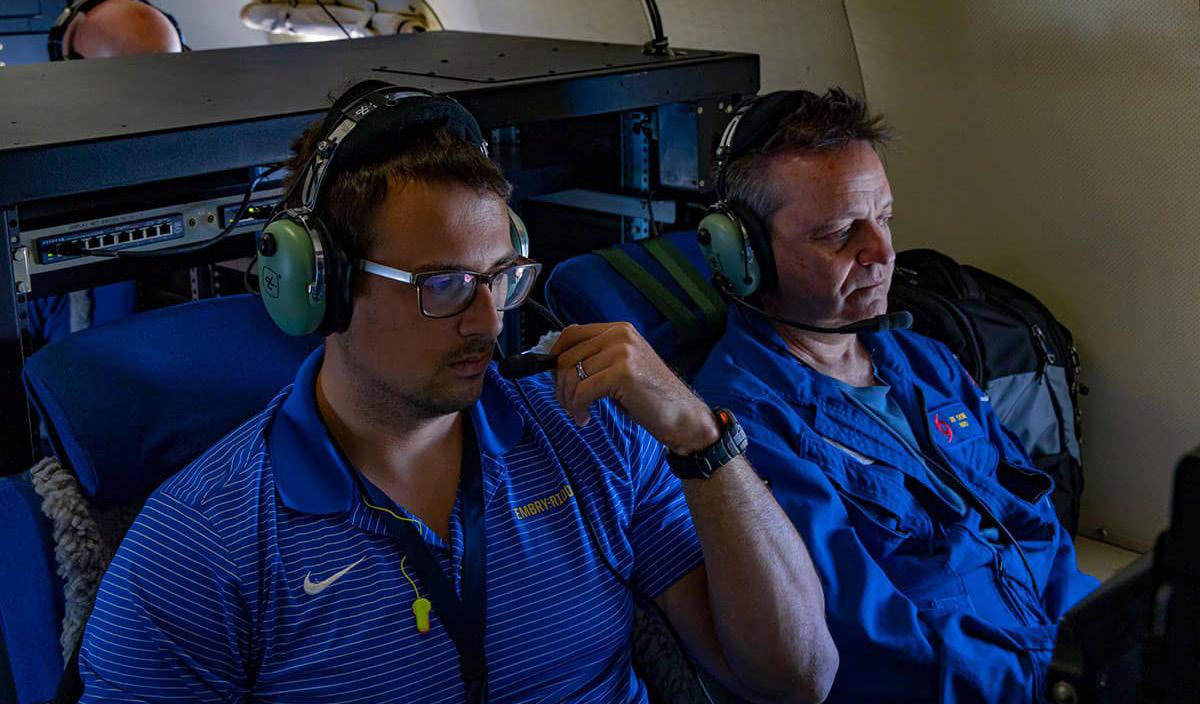
Embry-Riddle Faculty Innovative Research in Science and Technology (FIRST) grant, with help from the Faculty Research Development Program. The research team also included scientists from NOAA Research and NOAA’s National Weather Service.
investments without undue tax burdens, underscoring the firm’s reputation as an indispensable resource within the aviation community.
If you’re considering purchasing an aircraft in California or are concerned about potential use tax liabilities, don’t navigate the process alone. Let the experts at Aero & Marine Tax Professionals help you legally avoid unnecessary taxation and protect your investment. With a flawless track record of over 2,400 successful cases and unmatched insight into California’s complex tax system, Tom Alston and his team are ready to guide you every step of the way. Visit www.aeromarinetaxpros.com or call (916) 691-9192 to schedule a consultation and secure your financial peace of mind today.
BizAvJets USA Magazine wishes Tom and everyone at Aero & Marine Tax Professionals continued success.
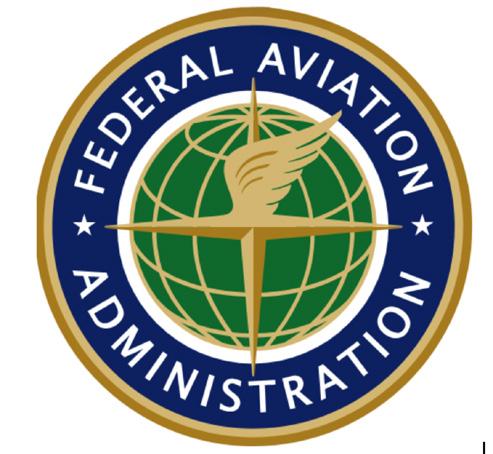
Owners can obtain more information on the process and submit a request for removal of their personal information by visiting Request to Withhold Aircraft Ownership Data/Federal Aviation Administration at faa. gov or directly at: https://www.faa.gov/licenses_ certificates/aircraft_certification/aircraft_registry/withhold_ ownership_data.
The FAA also announced plans to publish a request for comments to evaluate the full impact of this action on other functions, including maintenance, safety checks, regulatory compliance, and other matters.

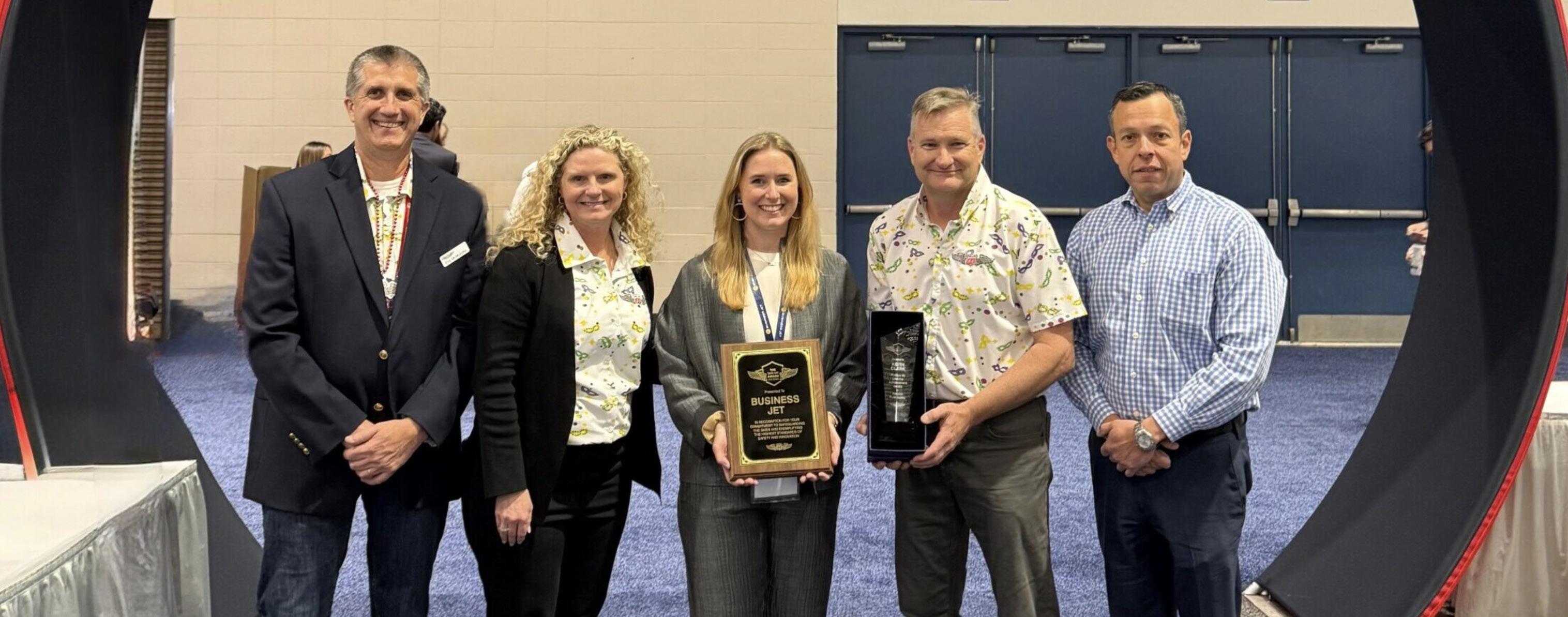
Keith Clark, Senior Quality Control & Technical Support Rep at Phillips 66 Aviation, has been recognized for his decades-long commitment to aviation safety with a Lifetime Achievement Award at the inaugural Phillips 66 Aviation, Safe Sky Award ceremony. A tireless advocate for improving safety standards across the industry, Clark has been instrumental in advancing key initiatives, including the Save a Life, Verify Fuel Type campaign and promoting enhanced training programs like NATA Safety 1st.
Alongside Clark’s recognition, long-time NATA Member and Safety 1st Training user,
Business Jet Center (BJC) was named the first-ever recipient of the Safe Sky Award, honoring outstanding commitment to safety and operational excellence.
Throughout his career, Keith Clark has been at the forefront of aviation safety, working to implement and promote best practices across FBOs, flight departments, and fueling operations. One of his most impactful contributions is his leadership in the Save a Life, Verify Fuel Type initiative, a critical safety campaign aimed at preventing misfueling incidents in aviation.
“Keith’s dedication to fuel safety and quality has saved lives,” said Steve Berry, NATA’s VP of Education
and Safety. “His leadership in the Save a Life, Verify Fuel Type campaign has helped create a culture of diligence, accountability, and communication between pilots and ground crews to prevent aircraft misfuelings. Keith’s career is a testament to what one person can do to make aviation safer for everyone,” added Berry. “His work has left an indelible mark on this industry, and his legacy will continue to influence safety practices for years to come.”
Clark has also been a long-time advocate of the NATA’s Safety 1st program and Certified QC Inspector Workshops, ensuring that ground crews and aviation professionals receive comprehensive, standardized training to maintain industry-wide safety excellence.
At the same event, Business Jet Center (BJC) in Dallas, Texas, was honored with the inaugural Safe Sky Award, recognizing its leadership in safety, risk management, and operational best practices. BJC’s proactive approach to training through both NATA Safety1st and in-house programs, adherence to strict safety protocols, and commitment to continuous improvement, like with their adoption of the NDX Inspections platform, have set a
Continued on Page 17
Continued from Page 16
high standard in the business aviation sector.
Hannah Vincent, director of FBO operations said, “It is an incredible honor to receive the inaugural Safe Sky Award from Phillips 66. This recognition truly reflects the hard work and dedication of our entire team, all of whom are committed to creating a safe and supportive environment.”
As aviation safety continues to evolve, Keith Clark’s contributions — spanning fuel quality and safety, professional training, and risk mitigation — will have a lasting impact on the industry. His work has not only shaped Phillips 66 Aviation’s approach to safety but has also influenced FBOs and operators nationwide to adopt more stringent safety measures.
With Clark’s well-earned Lifetime Achievement Award and Business Jet Center’s Safe Sky Award, the event underscored the importance of ongoing safety initiatives and industry collaboration to protect lives and enhance aviation operations.
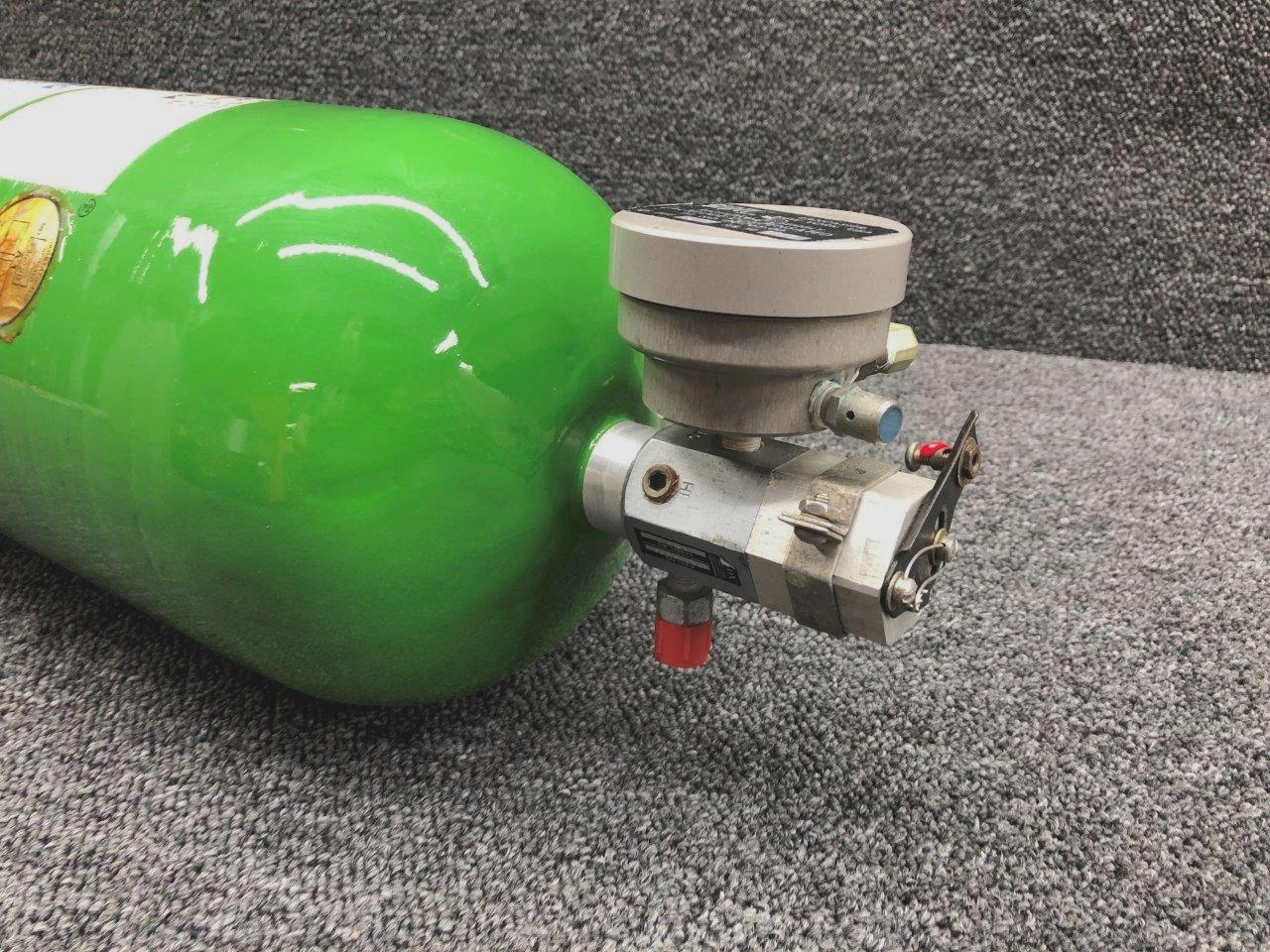

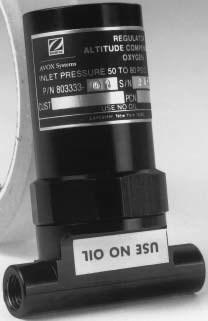
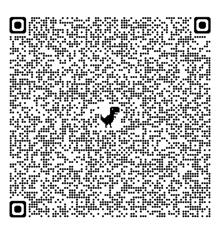
Discover the untold story of aviation maintenance in Beyond the Wrench by Elijah Stepp, Jr.—grab your copy today and get inspired. https://a.co/d/9MyDGUe
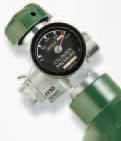


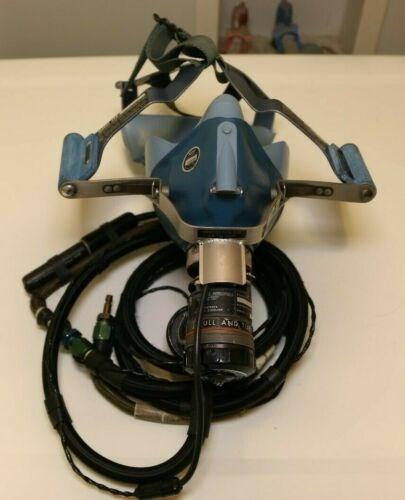
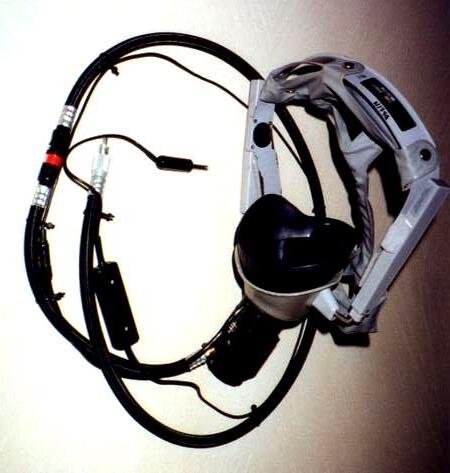
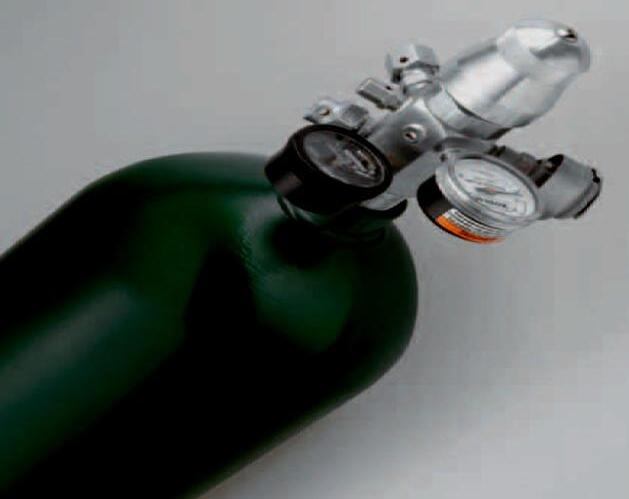

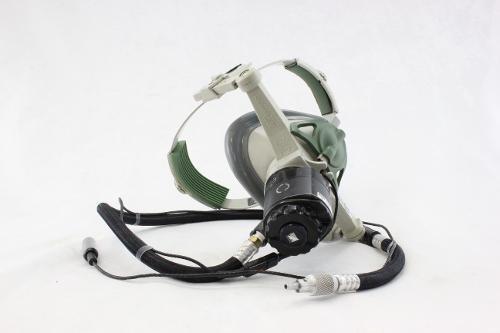



Interview by Elijah Stepp, BizAvJets USA Magazine
BizAvJets USA Magazine recently had the privilege of speaking with Karen Moore of Suite Life Privé. Ms. Moore made to time to speak with us to learn more about her firm’s services. Readers will enjoy learning of their background, as well as the Q&A interview that follows.
Bio
With more than 24 years immersed in the luxury hospitality and concierge world, Karen Moore is the driving force behind Suite Life Privé—a global concierge brand redefining high-end living with intentionality and elegance. As the Founder and Chief Experience Architect, she’s known for seamlessly blending meticulous attention to detail with a flair for crafting transformative, personalized experiences for ultra-high-net-worth clients across the globe
Originally gaining prominence orchestrating highprofile weddings and corporate events in Atlanta and Savannah, Karen’s journey spans bespoke travel planning, elite event design, and quietly powerful client service. In 2024, she transplanted her expertise to Las Vegas, anchoring Suite Life Privé’s international reach with her signature blend of sophistication, discretion, and hospitality.
But Karen’s influence extends far beyond luxury planning. A published author and motivational speaker, she has written on topics ranging from wedding planning to resilience, faith, and wellness. As a threetime sepsis survivor, her personal journey has fueled her philanthropic commitment—she founded the James D. Memorial Foundation in honor of her late husband, championing sepsis awareness through partnerships with national healthcare organizations.
Ever the visionary, Karen recently launched the Suite Life Insider Podcast and introduced the Suite Life Privé luxury networking community—bridging elite travel, concierge services, and trend-setting connection
for high-net-worth professionals.
Grounded in values of Faith, Family, and Purpose, Karen describes luxury as “a lifestyle rooted in intention, intimacy, and individuality.” Whether curating VIP galas, designing once-in-a-lifetime escapes, or inspiring others through her writing and philanthropic work, she never wavers from her mission: to elevate everyday life into something extraordinary.
BizAvJets USA Q&A With Karen Moore
BAJ USA: Karen, thank you for joining us. To start, tell us a little about yourself and how Suite Life Privé came to be.
Karen Moore: Thank you—it’s a pleasure. I’m fairly new to Las Vegas; I moved here from Savannah, Georgia, in late 2024. I’ve been in the event, travel, and hospitality space for about 25 years, so while I may be new to Vegas, I’m certainly not new to the industry. I fell in love with this city’s vibrancy and diversity, and I made it my mission to showcase its true identity—not just as “Sin City,” but as a cultural and innovative hub with so much more to offer.
BAJ USA: How did your company’s name evolve?
Karen: Originally, I named it “Suite Life Vegas,” but I quickly realized I’d boxed myself in. I rebranded to Suite Life Privé—“privé” being French for “private”— to reflect a more elevated, global approach. We’re a full-service luxury concierge company offering bespoke travel, estate and home management, and one-of-a-kind event experiences. If it’s legal and ethical, we’ll make it happen.
BAJ USA: What kind of clientele do you typically serve?
Karen: Primarily ultra-high-net-worth individuals— founders, executives, and global travelers who are discerning and know exactly what they want. That’s
Continued from Page 18
where my creativity thrives. Every experience we design completely custom, infused with intentionality, and tailored from deep listening. I love unearthing those subtle details that add sentimentality and surprise.
BAJ USA: What’s the typical size of these experiences? Are they private or large-scale?
Karen: We do everything—from a two-person romantic escape with a mountaintop picnic to thousandperson corporate conventions. One of my most defining events was a meat industry convention that tested every skill I had, from logistics to live execution. But whether it’s two guests or two thousand, the goal is always the same: deliver a lasting memory with excellence.
BAJ USA: That sounds like a huge range. What’s your approach to ensuring things go smoothly?
Karen: We operate with the mindset that we only get one shot to get it right. We meticulously map out every phase of an event, anticipating what could go wrong and how we’ll pivot. My team is trained to execute Plan B seamlessly, without ever disrupting the client experience.
BAJ USA: When you came to Vegas, did your client base follow you?
Karen: Some did. I still work with clients from Savannah—many reach out when traveling to Vegas or elsewhere. But I’ve also been cultivating a new client base here and expanding globally. I’m building a network of international providers so I can serve clients in Paris, Dubai, or wherever they need us.
BAJ USA: Do you partner with resort concierges as well?
Karen: Yes. Resorts and concierge teams occasionally reach out when they can’t fulfill a unique request. I’ve had MGM contact me for hard-to-source items or experiences. I’m happy to step in where others hit a wall.
BAJ USA: What was your focus back in Savannah?
Karen: A blend of high-profile weddings and corporate events. Weddings allowed for more creative freedom, which I loved. That freedom helped prepare me for just about anything—including the occasional “bridezilla.” But honestly, I’ve been blessed with wonderful clients and relationships that often extend well beyond the event.
BAJ USA: On a personal note, I understand you’ve survived sepsis three times. That’s extraordinary.
Karen: Yes. I lost my husband to sepsis—he was my business partner and best friend. It was a devastating, life-altering loss. Not long after, I became septic myself. Surviving brought on a lot of emotional and physical challenges, including survivor’s guilt. I dove into understanding the condition, comparing our medical records, and eventually became an advocate. I’ve worked with groups like NPAF, the Sepsis Alliance, and even spoke on Capitol Hill to raise awareness. It pushed me out of the shadows and gave me a voice—one I now use for others.
BAJ USA: That’s deeply moving. We are so sorry for your loss. You also host a podcast, correct?
Karen: Yes, Suite Life Insider. It’s on hiatus while we rebrand, but it’ll be relaunching soon with content focused on luxury trends, curated lifestyle insights, and deeper conversations about the evolving luxury market.
BAJ USA: What’s next for Suite Life Privé?
Karen: Global expansion. I’m forming partnerships in the UK and elsewhere to offer seamless international service. We’re also launching a lifestyle product division and I’m working on a high-end coffee table wedding book. Every day feels like a new opportunity. I wake up excited—there’s always something to create, someone to connect with, or a new lesson to learn.
BAJ USA: Given we’re a business aviation magazine, I’ve got to ask: have you worked with private aviation?
Karen: Absolutely. In the past, I’ve arranged logistics for clients arriving by private jet, and now that I’m in Vegas, I’m learning even more—getting familiar with Henderson Executive, Signature Flight Support, and aviation protocols. I’ve also been diving into executive protection awareness to better serve my highprofile clients. Knowing how to keep them safe is just as important as giving them an unforgettable experience.
BAJ USA: That’s a powerful combination— experience and empathy. Is there anything else you’d like to share?
Karen: Only that if you’d asked me last year if I’d ever leave Savannah, I’d have said no. But life shifts. Vegas opened its doors, and I walked through. I’m grateful every day for the opportunities and the people I get to serve.
Suite Life Privé is redefining luxury with intention— and Karen Moore is the visionary behind it. Whether she’s designing a mountaintop proposal or orchestrating a global expansion, one thing is clear: she’s just getting started. BizAvJets USA wishes Karen all the best in the future. Readers are encouraged to visit www. suitelifePrivé.com to learn more.
